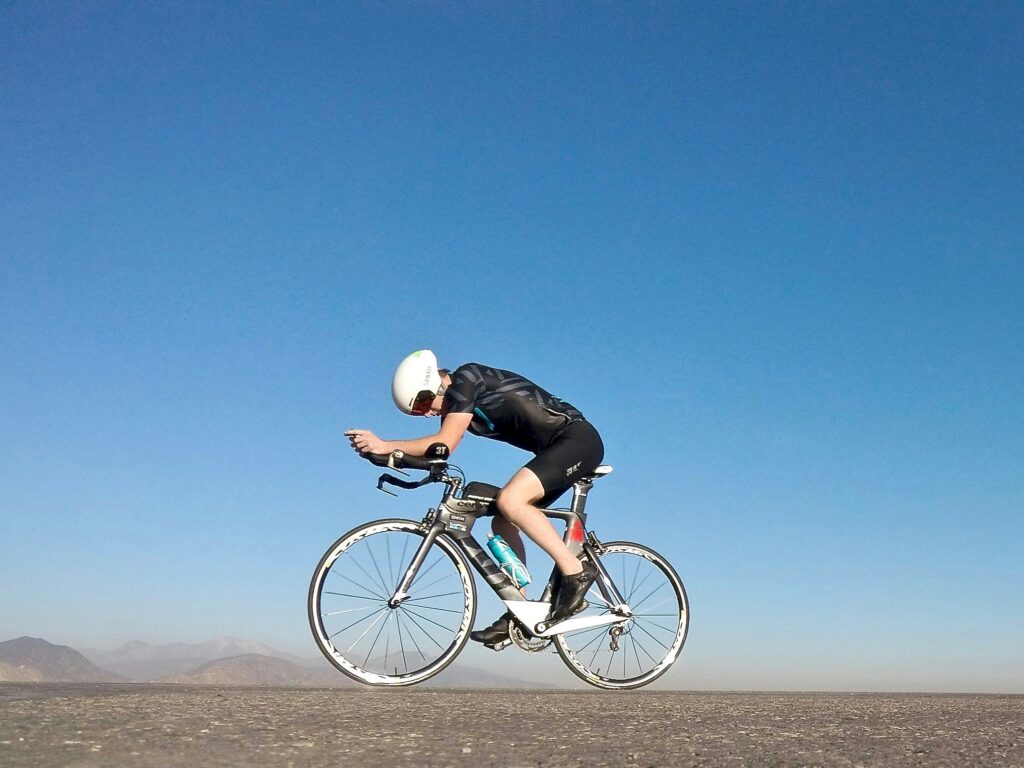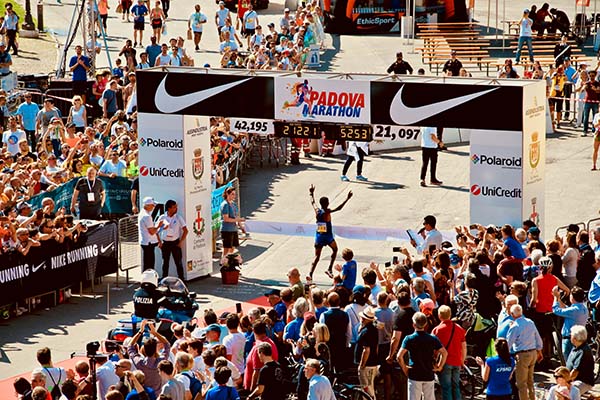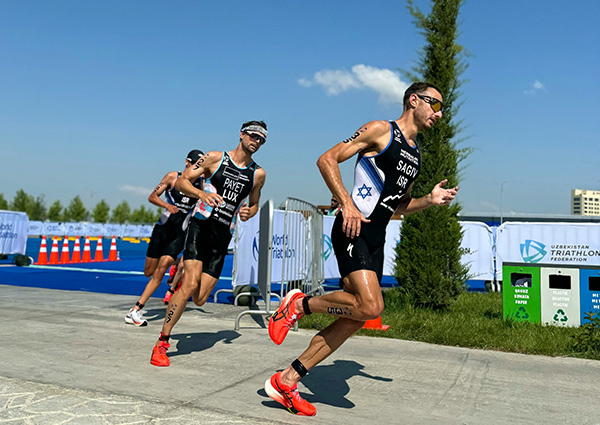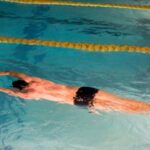A triathlon is a race where you swim, bike, and run one after another without stopping, and your time is measured from start to finish.
I’ll be honest, when I signed up for my first triathlon, I was borderline cocky about it. I’d been running for years, hit the gym regularly, and figured, “How hard could it be? Just three sports strung together, right?”
Wrong. So wonderfully, humiliatingly wrong.
Turns out there’s a massive difference between being “fit” and being “triathlon fit.” But that’s exactly what hooked me. If you’re thinking about dipping your toes into this crazy sport (pun absolutely intended), let me save you from some of my rookie mistakes.

What Actually Is a Triathlon?
At its core, a triathlon is pretty straightforward: you swim, then bike, then run. The clock starts when you hit the water and stops when you cross that finish line. No breaks, no timeouts, just you versus the course.
What makes it interesting is that triathlons come in wildly different sizes. You can ease in with something manageable or go full masochist mode. Your call.
Picking Your First Race (Please Start Small)
Here’s where I almost screwed up. I initially wanted to register for a Half-Ironman because it sounded impressive. Thankfully, a friend physically stopped me from clicking “submit” on that registration form.
Sprint Distance is where most people should start: 750m swim, 20km bike, 5km run. It’s challenging but doable, and you can usually finish in under 90 minutes. Perfect for testing the waters without drowning in commitment.
Olympic Distance is the next step up: 1.5km swim, 40km bike, 10km run. This was my first race, and honestly? It kicked my butt. But in a good way. It’s the standard distance for a reason, long enough to be legitimate, short enough that you won’t lose an entire day.
Half-Ironman (70.3) is where things get serious: 1.9km swim, 90km bike, 21.1km half marathon. This is a completely different beast. You’re looking at 4-6 hours of racing, and training becomes a part-time job.
Ironman is the final boss: 3.8km swim, 180km bike, full 42.2km marathon. I’ve done one. Once. It was equal parts incredible and insane. Most people take 10-15 hours to finish. Not for the faint of heart.
A Quick History Lesson
The whole triathlon thing started from a bar argument in the ’70s in San Diego. Some athletes were debating whether runners, cyclists, or swimmers were the toughest, so they decided to settle it by combining all three. The first Ironman happened in Hawaii in 1978 with 15 competitors, and somehow this bonkers idea caught on. Now there are thousands of races worldwide.

The Gear Situation (It Adds Up Fast)
I’m not going to sugarcoat it, triathlon can get expensive. But you don’t need top-of-the-line everything to start.
Swimming gear is pretty minimal: goggles that don’t leak (please test them first), and a wetsuit if you’re racing in open water. The wetsuit helps with buoyancy and warmth, though some races in warm water are “wetsuit optional” or even “wetsuit illegal.”
Your bike doesn’t need to be fancy. I used a borrowed road bike for my first race, and it was perfectly fine. Just make sure it fits you properly and get a bike fit if you can afford it, your lower back will thank you during those longer rides. A helmet is non-negotiable; they won’t let you race without one.
Running shoes should be whatever works for your feet. I learned the hard way that running after cycling feels completely different from a normal run. Your legs are already trashed, so comfort matters even more.
Tri suit is a game-changer for transitions. It’s designed to be worn under your wetsuit and through all three legs. No changing required. Worth every penny.
Training: Where Reality Hits Hard
Swimming Nearly Broke Me
I thought I was a decent swimmer. I could knock out laps at the pool without dying. Then I got in open water for the first time and nearly had a panic attack.
Open water swimming is a completely different sport. There are no lane lines, no walls to grab, no black line on the bottom to follow. Just murky water, other swimmers smacking into you, and your brain screaming that something is horribly wrong.
Work on your technique. Seriously. You can’t muscle your way through a triathlon swim. Learn to breathe on both sides (bilateral breathing), practice sighting so you don’t swim off course, and for the love of all that’s holy, do some open water sessions before race day. The pool is a liar, it won’t prepare you for the chaos of a mass start.
Cycling: Where You Can Win (or Lose) the Race
The bike leg is typically half or more of your total race time, so there’s serious opportunity here. I spent weeks building my cycling endurance, gradually increasing my long rides, and throwing in hill repeats to build strength.
The absolute most important thing? Brick workouts. That’s when you bike, then immediately run. The first time you do this, your legs will feel like cement blocks. But this is exactly what happens during a race, so you need to teach your body how to handle it. Start with something short, 20-minute bike, 10-minute run, and build from there.

Running: The Mind Game
Running off the bike feels like someone swapped your legs for someone else’s. They’re heavy, wobbly, and refuse to move at your normal pace. This is normal.
What helped me most was accepting that my run pace in a triathlon would be significantly slower than my standalone 5K or 10K pace. Once I stopped fighting that reality and focused on consistent effort, things got better.
Do your brick workouts. Run tired. Practice running when you absolutely don’t want to. That’s what race day feels like.
Fueling the Machine
I completely botched my nutrition in my first race. I bonked hard at kilometer 35 on the bike and limped through the run feeling like death.
Before the race, carb-load intelligently. Not just one giant pasta dinner the night before, but a few days of increased carbs. And hydrate consistently, not just chugging water the morning of.
During shorter races (sprint/Olympic), you might not need much. I usually just have water and maybe one gel on an Olympic distance. But anything longer, and you need a plan. Test your nutrition in training, never try something new on race day. Energy gels, chews, sports drinks, whatever works for your stomach. And honestly, some people can eat anything; others (like me) have very finicky stomachs under stress.
Things I Wish Someone Had Told Me
Transitions are your fourth discipline. I spent so much time training that I barely practiced transitions. Then I fumbled around in T1 like a confused turtle while people zoomed past me. Practice setting up your transition area. Know exactly where everything is. Every second counts.
Your first swim will be terrifying. Just accept it. Keep your head, focus on your breathing, and if you need to float on your back for a minute, do it. No shame. Everyone’s been there.
Pace yourself in the swim. The adrenaline at the start will make you want to sprint. Don’t. You have a bike and a run waiting for you. Save your energy.
The race is 90% mental after the halfway point. Your body can do more than your brain thinks it can. When that voice says “this is too hard,” tell it to shut up and keep moving.

Why You Should Absolutely Try This
Look, triathlon training is time-consuming, occasionally painful, and will make you question your life choices more than once. But crossing that finish line, especially the first time, hits different.
It’s not just about the physical challenge. It’s about proving to yourself that you can commit to something hard and see it through. It’s about discovering you’re capable of way more than you thought.
Start with a sprint. Find a local race, sign up before you can talk yourself out of it, and start training. You don’t need to be an elite athlete. You just need to be willing to put in the work.
And trust me, the first time someone calls you a triathlete, you’ll stand a little taller.
Now go sign up for a race. You’ve got this.





